Chiyi, Contemplate
Since the release of the Chiyi, Contemplate art series twelve years ago, observing fluid motion has almost become second nature to me. Whenever I’m outdoors, I find myself instinctively seeking out water sources and other signs connected to fluidity.
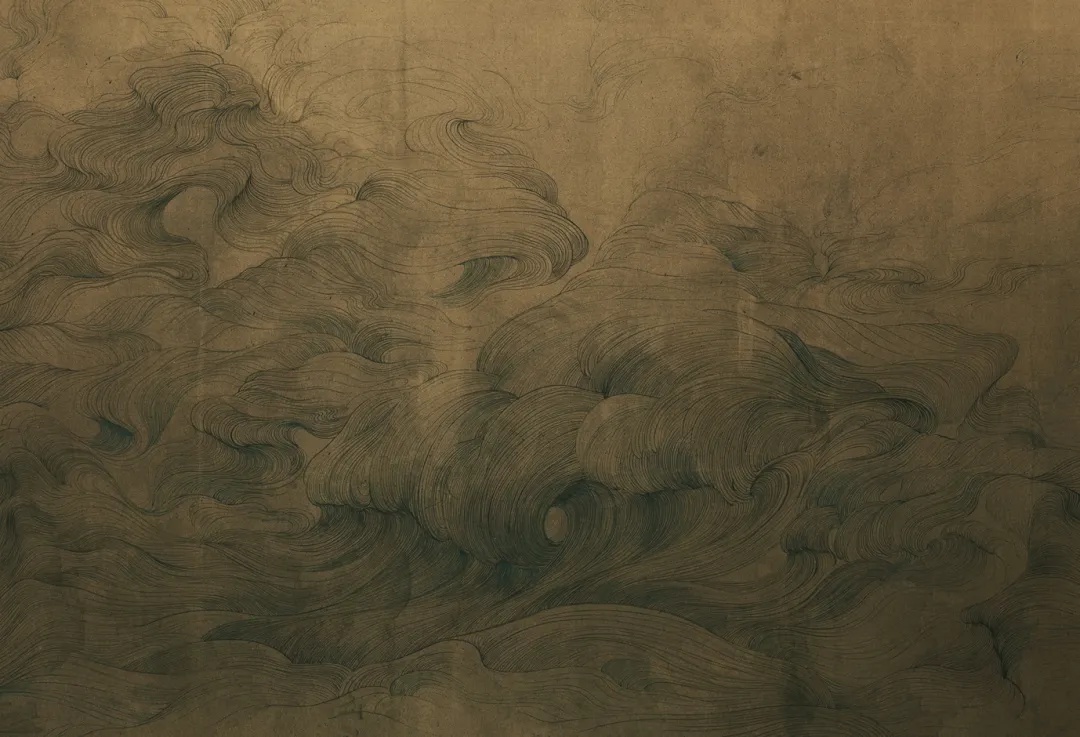 ▲ Contemplate - 14 , Mineral color pigment on silk, 180 x 500 cm (partial), 2015
▲ Contemplate - 14 , Mineral color pigment on silk, 180 x 500 cm (partial), 2015
Water acts as a silent guide, progressively revealing insights. It communicates only as much as you are prepared to understand. I explore the commonalities of fluidity through various materials: pebble stones, bedrock layers, silt, magma, feathers, tree bark, deserts... The relationships these elements have with movement, formation, and accumulation are profoundly subtle. Sometimes painting can connect seemingly unrelated things, uniting them through a language of composition. It’s about sparking the potential for richer ideas in people by allowing them to see such possibilities.
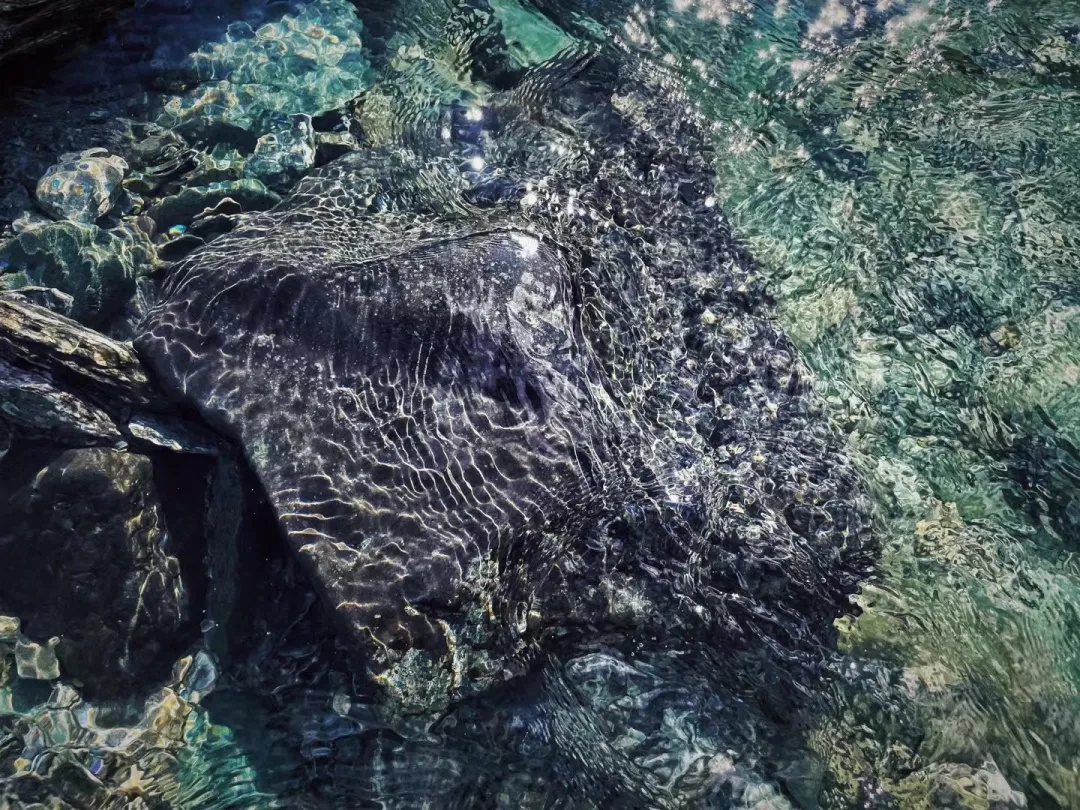 ▲ The traces left by flowing water on the sand ©Courtesy of the artist
▲ The traces left by flowing water on the sand ©Courtesy of the artist
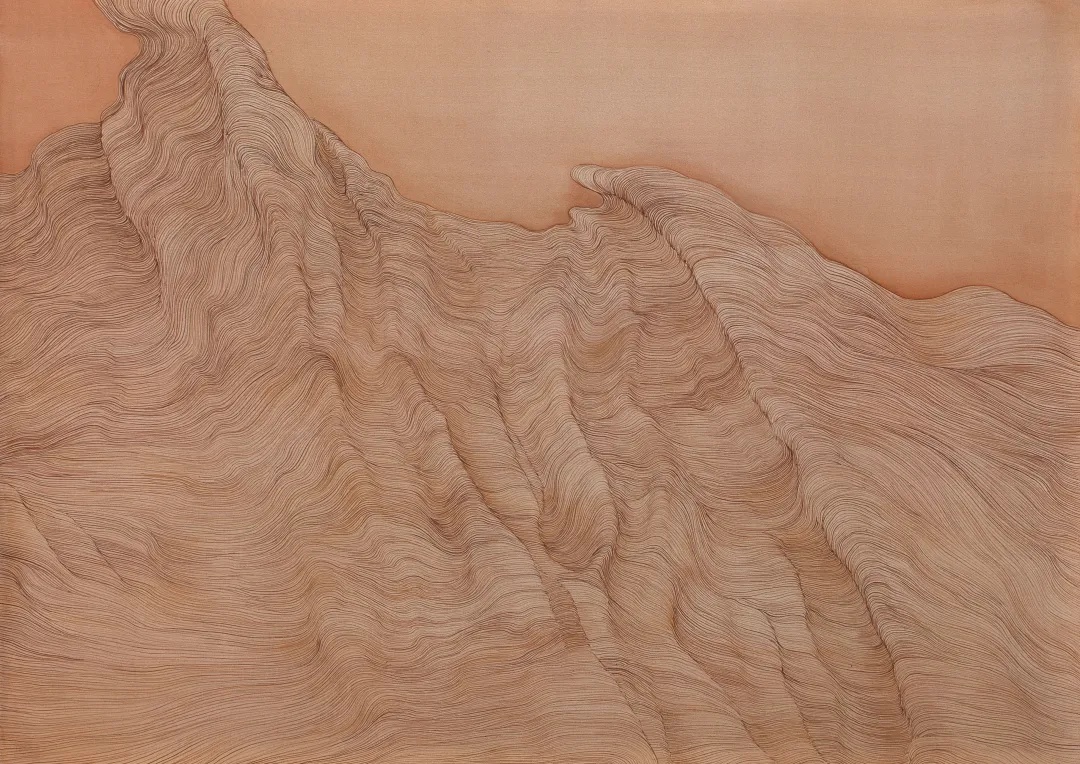 ▲ Contemplate - 27 , Mineral color pigment on silk, 50 x 70 cm, 2018
▲ Contemplate - 27 , Mineral color pigment on silk, 50 x 70 cm, 2018
There exists an invisible thread within the world, seeping into the sensory perception of individuals, drawing them into continuous, contemplative thought.
In this journey, maintaining a sense of curiosity and reverence for the mysteries of the world is the secret to a fulfilling and ever-vibrant life. The seemingly insignificant, often overlooked things carry the stories of our comings and goings.
I often sit by the water, watching the rise and fall of the waves over and over again.
Strange thoughts occasionally come to mind. For instance, I feel there is a subtle contradiction between water and time. To me, water sometimes seems like a form of repetition, as its cyclical nature can appear almost static. A bidirectional cycle moving at the same speed creates a state of relative stillness. In such a hazy pause, it sometimes feels as if a doorway to eternity opens. If life could extend within this channel, our understanding and engagement with all things would be unburdened. This would allow us to refine and perfect freely, not for any specific purpose, but in pursuit of the ultimate truth.Imagine if we had infinite time, free from the constraints of cycles to focus intently on a single task. The outcome would be the exact opposite of “more haste, less speed”. Rushing anxiously often leads to incomplete results, it is far better to release our anxiety about time, allowing ourselves to move toward a fuller sense of completeness.
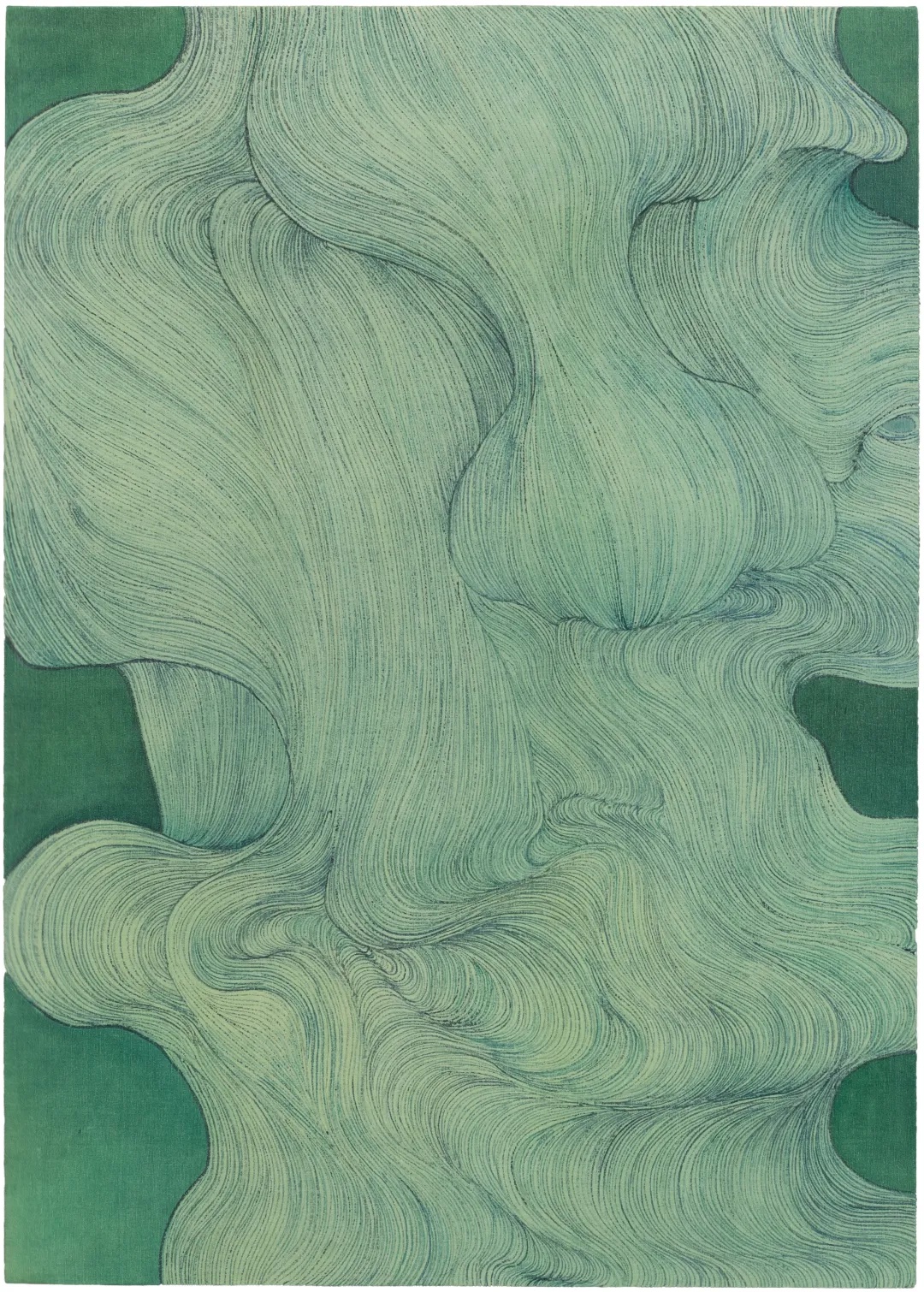 ▲ Contemplate - 69 , Mineral color pigment on silk, 47 x 34 cm, 2022
▲ Contemplate - 69 , Mineral color pigment on silk, 47 x 34 cm, 2022
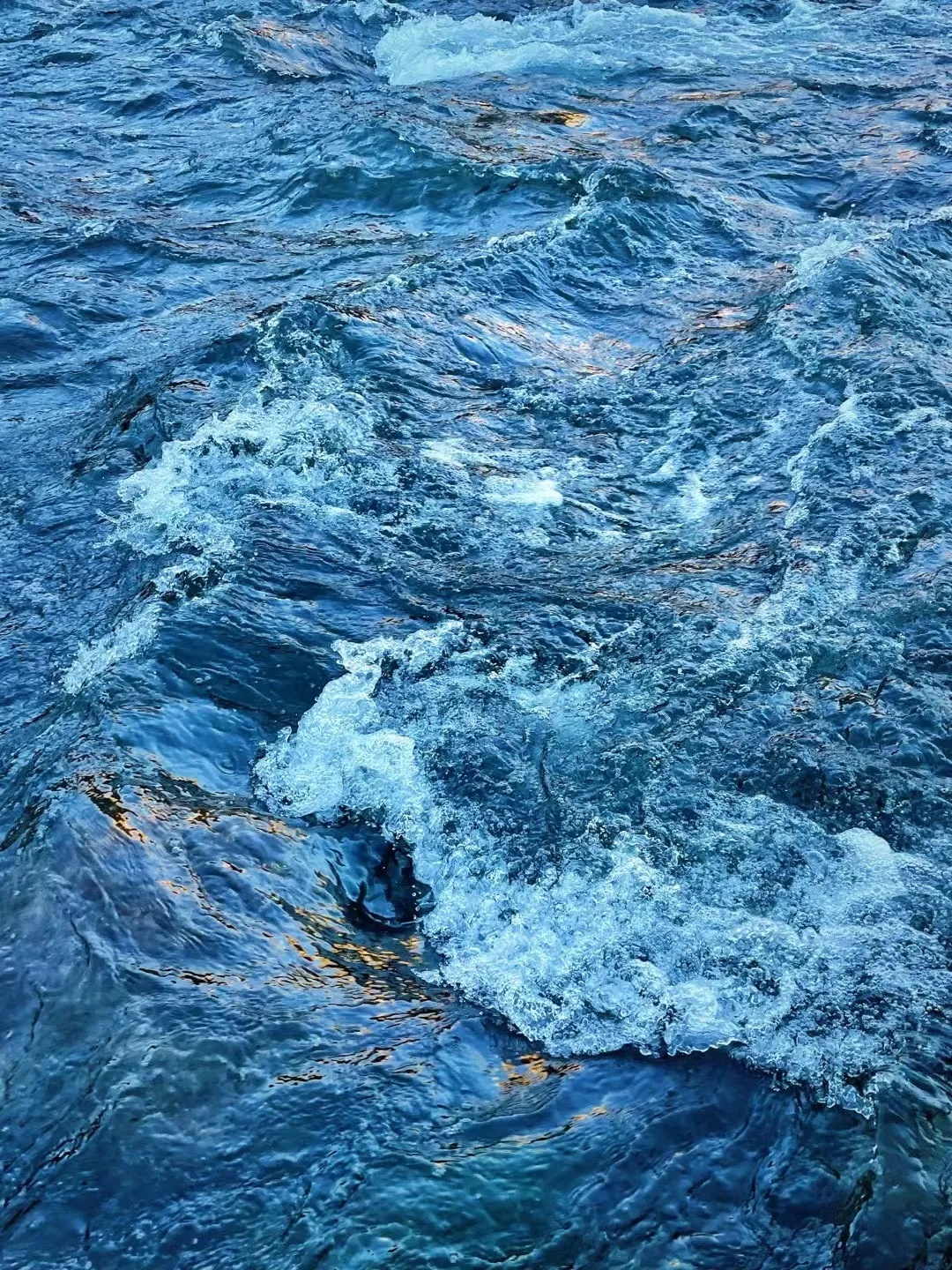 ▲ Photo of water flow ©Courtesy of the artist
▲ Photo of water flow ©Courtesy of the artist
On a clear mountain night, I looked up at the sky full of stars. It seemed like a flowing river. I feel as though I am not far from it, as each star is composed of countless cycles of birth and decay. Be it rivers above or below, each wave and foam is manifestation and dissipation of countless lives. So, does flow take time? If cycle motion denies time, then could we approach our changing conception of time differently?
I can’t find the words, but when time vanishes, countless contradictions dissolve into unity. Without time, there would be no death, and without death, there might be no fear. I find that the water is constantly flowing backward. In fact, it can generate a countercurrent within the forward flow. In the relationship between the source of the water and the ocean, there seems to be a sense of unity between the beginning and the end. Two aspects of the same entity seamlessly connected.
This is the true essence of perceiving fluidity in painting.
“Ways of Observing and Relating to Water”
Most observations are driven by purpose, but this approach only allows us to see the surface level, familiar phenomenon. If you want to see more, let go of any desire to obtain something. In doing so, any discovery becomes a stroke of unexpected fortune rather than something owed. This is also true in relationships between people, or between people and objects. It stems from respect for the other. Just as you may like water, water may not necessarily like you.
You might think of water as merely an object, so why would it have any preference? You can cup it in your hands and drink it, or toss it into the air to let it evaporate. You might think you control it, but, in truth, it gathers strength secretly, from all directions. It can overwhelm you, make you thirst, or transform into ice, rain, wind, cloud, sea—becoming something you cannot grasp or command.
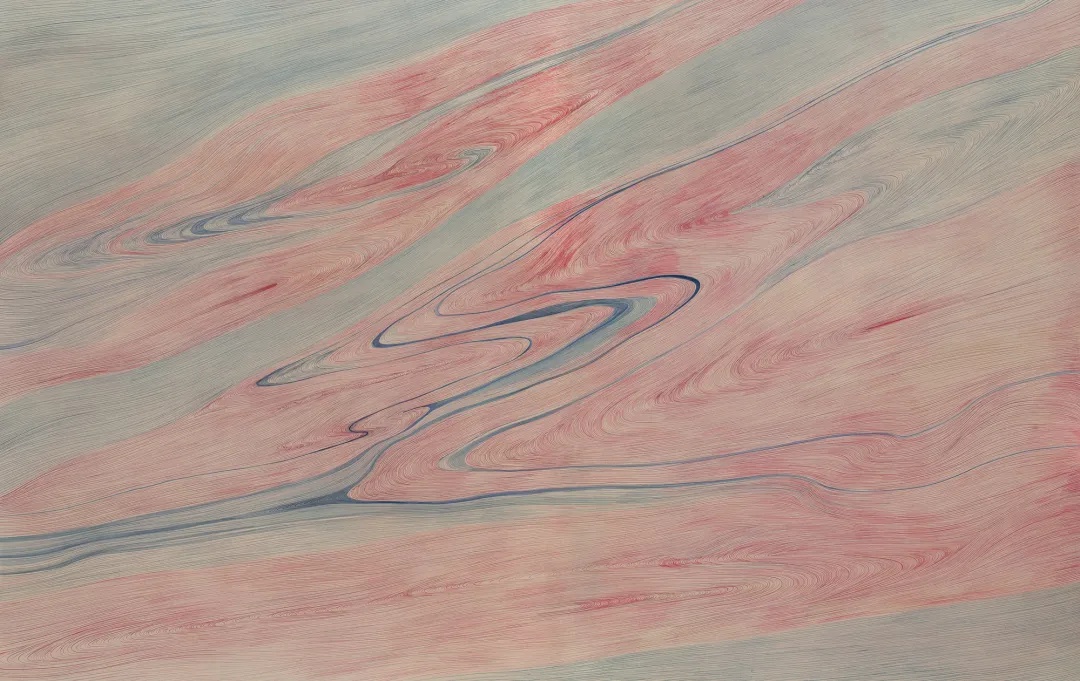 ▲ Contemplate - 36 , Mineral color pigment on silk, 155 x 100 cm, 2019
▲ Contemplate - 36 , Mineral color pigment on silk, 155 x 100 cm, 2019
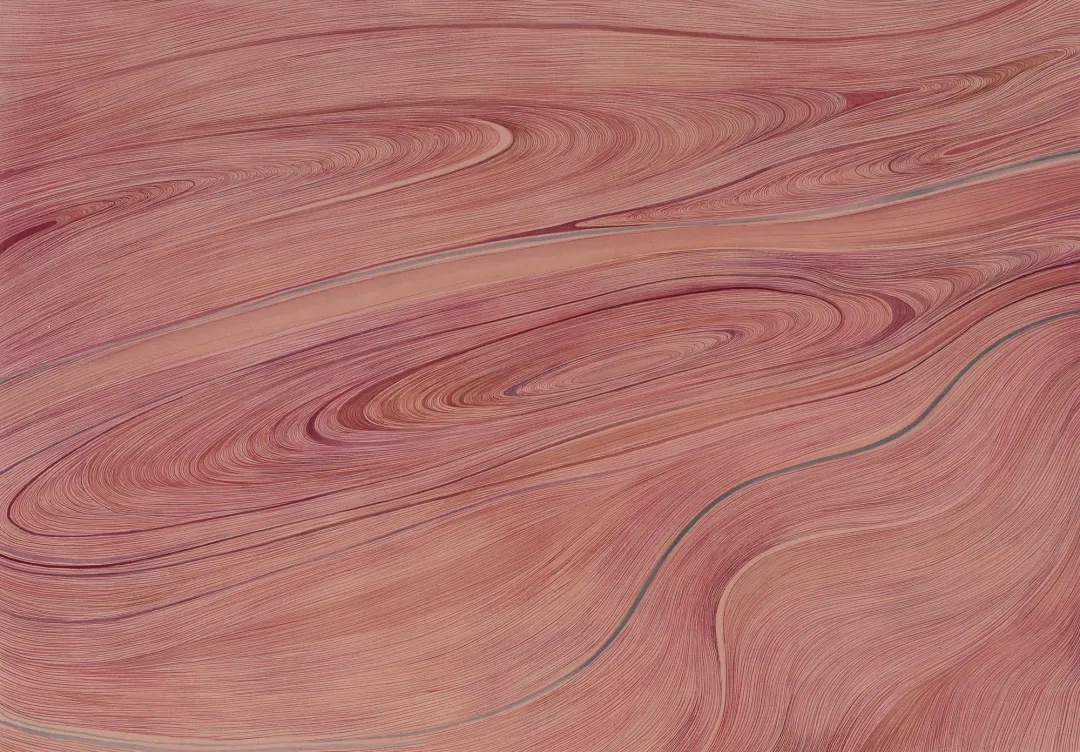 ▲ Contemplate - 45 , Mineral color pigment on silk, 70 x 50 cm, 2019
▲ Contemplate - 45 , Mineral color pigment on silk, 70 x 50 cm, 2019
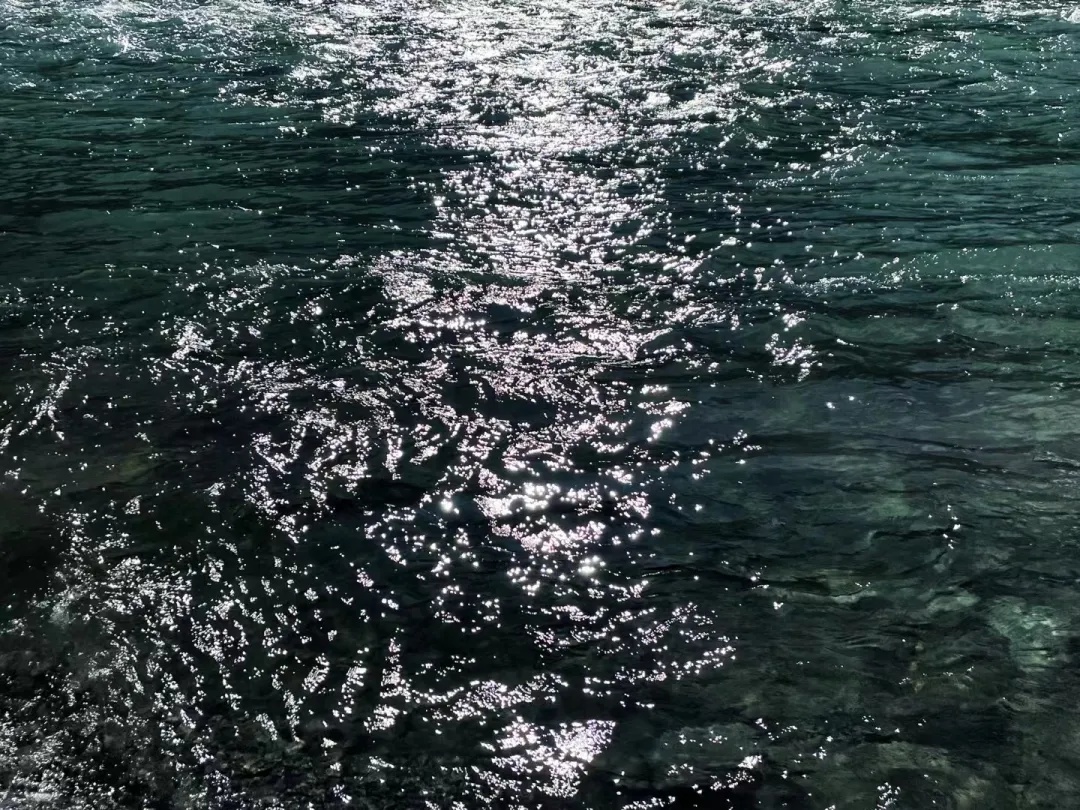 ▲ Photo of water flow ©Courtesy of the artist
▲ Photo of water flow ©Courtesy of the artist
The Guqin piece “Oulu Wang Ji (Seabirds and No Ulterior Motives)” illustrates this well. It means that when the mind is disturbed, the essence is obscured, and only appearances remain.
Interacting with water first requires a sense of wholeness in yourself and in the object you observe. Then you wait patiently, not focusing too closely but remaining quietly present. In this quiet coexistence, we can feel a fullness from sounds, colors, light, textures like silk or jade, temperatures, tastes, and everything from the stones beneath water to small underwater creatures and plants. Water becomes both an object and an environment. With my limited perception, I try to perceive water’s infinite flows and transformations. It’s like harmonizing with water to reach the same frequency, generating resonance.
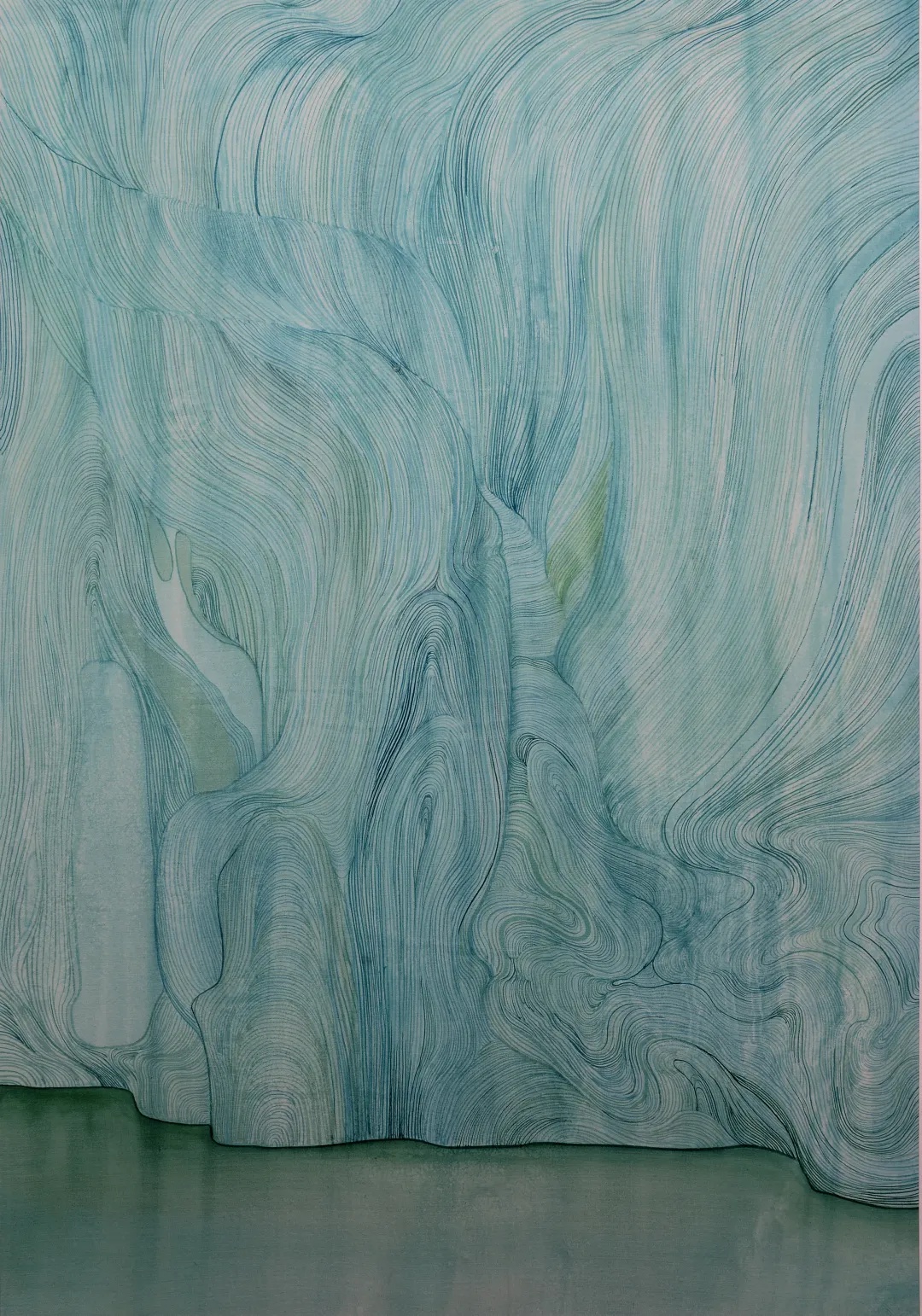 ▲ Contemplate - 89, Mineral color pigment on silk, 70 x 50 cm, 2024
▲ Contemplate - 89, Mineral color pigment on silk, 70 x 50 cm, 2024
The image is still, yet the consciousness is in motion.
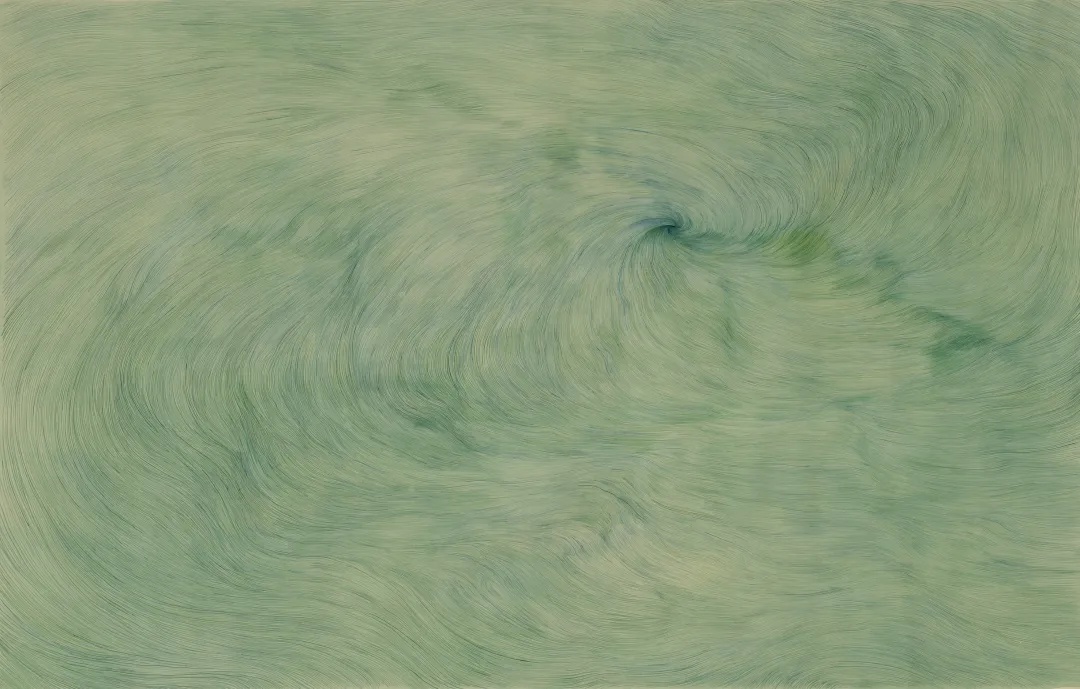 ▲ Contemplate - 37 , Mineral color pigment on silk, 150 x 100 cm, 2018
▲ Contemplate - 37 , Mineral color pigment on silk, 150 x 100 cm, 2018
The image is still, yet the consciousness is in motion. The trajectory of flowing water is almost always a perfect curve, sometimes appearing, sometimes disappearing, molding itself to its surroundings with a blend of softness and strength. In early spring, the ice on the river has not yet fully melted, but through a small opening beside a river stone, you can glimpse a cross-section of the ice. Beneath the ice, the water is already rushing, like a hidden army in swift motion, flowing downstream to nourish life awakening from the cold. By the shallow bank near the trees, the rippling waves of the water settle clearly on the riverbed. These beautiful curves and traces of movement are soon replaced by new waves.
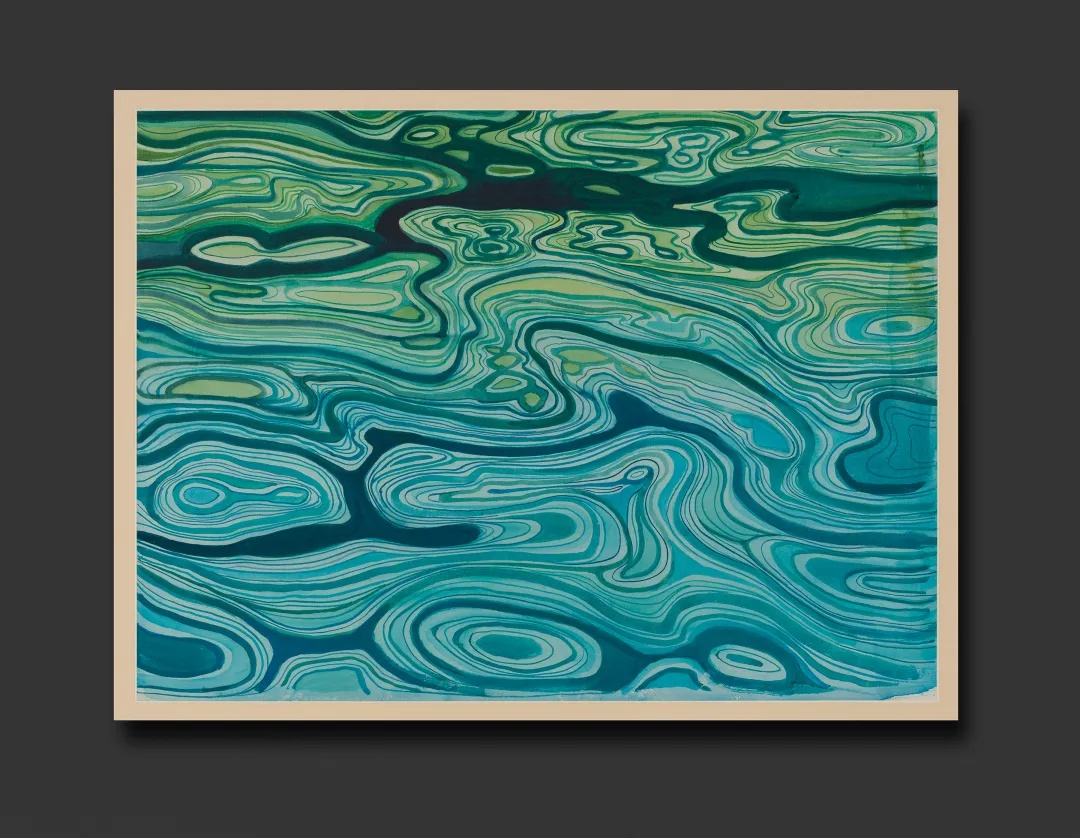 ▲ Contemplate - Follow Nature , Mineral color pigment on silk, 36 x 48 cm, 2024
▲ Contemplate - Follow Nature , Mineral color pigment on silk, 36 x 48 cm, 2024
 ▲ Photo of water flow ©Courtesy of the artist
▲ Photo of water flow ©Courtesy of the artist
My favorite scenes are the shifting patterns on the water’s surface as it is swept by varying wind speeds. The stronger the wind, the more tension shapes the waves. Don’t attempt to capture these images. Instead, try to understand the wind, for you could never imagine the changing forms of the ripples. When the wind rises, watching the water fills me with a strange excitement because these turbulent waves seem as if they will soon calm down, and their brief intensity makes them especially precious.
This frequency of rhythm can be found everywhere in nature and human activity. People are always skilled at capturing intense scenes, like hunting, volcanic eruptions, earthquakes, tsunamis, courtship rituals, and boxing. Yet, for the most part, the world moves forward in a slow, steady order.
 ▲ Contemplate - 15 , Mineral color pigment on silk, 100 x 60 cm, 2016
▲ Contemplate - 15 , Mineral color pigment on silk, 100 x 60 cm, 2016
There are two states of being. One of them is the habitual consciousness of daily matters. Flowing like a stream, consciousness is continuous. Sometimes, I focus solely on the flow of awareness itself, letting go of the content of conscious activity, leaving only the sense of flow. In this state, the body and mind seem to experience a brief rest. This is also highly beneficial for perception, as if the awareness of the body replaces the mind’s thoughts, allowing intuition to take over from logic.
“Flowing Water and Passing Away”
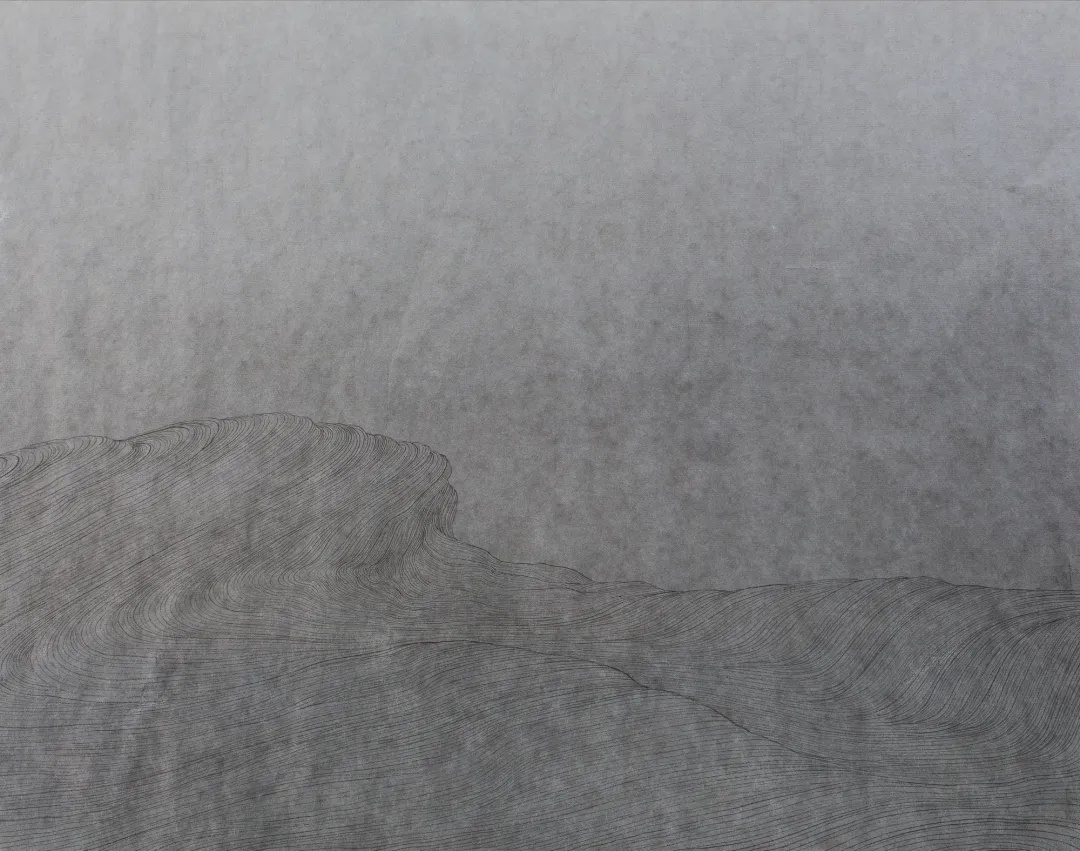 ▲ Contemplate - 26 , Mineral color pigment on paper, 70 x 50 cm, 2018
▲ Contemplate - 26 , Mineral color pigment on paper, 70 x 50 cm, 2018
When we truly face separation, Everyone feels a sense of fear and unease, allowing it to unfold and waiting for it to pass. Few can willingly embrace and welcome the rapid onset of change, but if we confront it, images and music may surface in our minds, ultimately bringing us back to peace. Each of us follows our own path, as does the water, and these paths are themselves constantly shifting.
As the saying goes, “Seas change into mulberry fields.” We always feel sorrow at parting, yet water never grieves, for it never truly disappears, it simply transforms.
It only knows how to flow, not to ponder. It has no time for sadness or joy, only moving toward the next stage, unceasing yet untiring, pausing only in its endless cycles. If its nature is to repeat, then where is the sorrow? People only fear the long wait. After the cycle, everything begins anew. The answers lie in the transformations of all things. The diversity of life gives different measures of time’s cycles: there are summer insects and the long-lived Pengzu; ferns that have persisted since the Jurassic era and the ocean’s living fossils. All these changes in time ultimately unify in the negation of time itself. Life is both complex and simple. Should we immerse ourselves in emotions or submit to the laws of nature? Look at what water does—it desires nothing, fears nothing, gathers and disperses with form, and is never extinguished. Discover and imagine: does our awareness of change come from external forces or from within? Or perhaps they align.
Maintain curiosity and a sense of wonder toward the mysteries.
As the saying goes, “To learn is to increase daily, to follow the Way is to decrease daily.” From addition to subtraction, from the part to the whole.
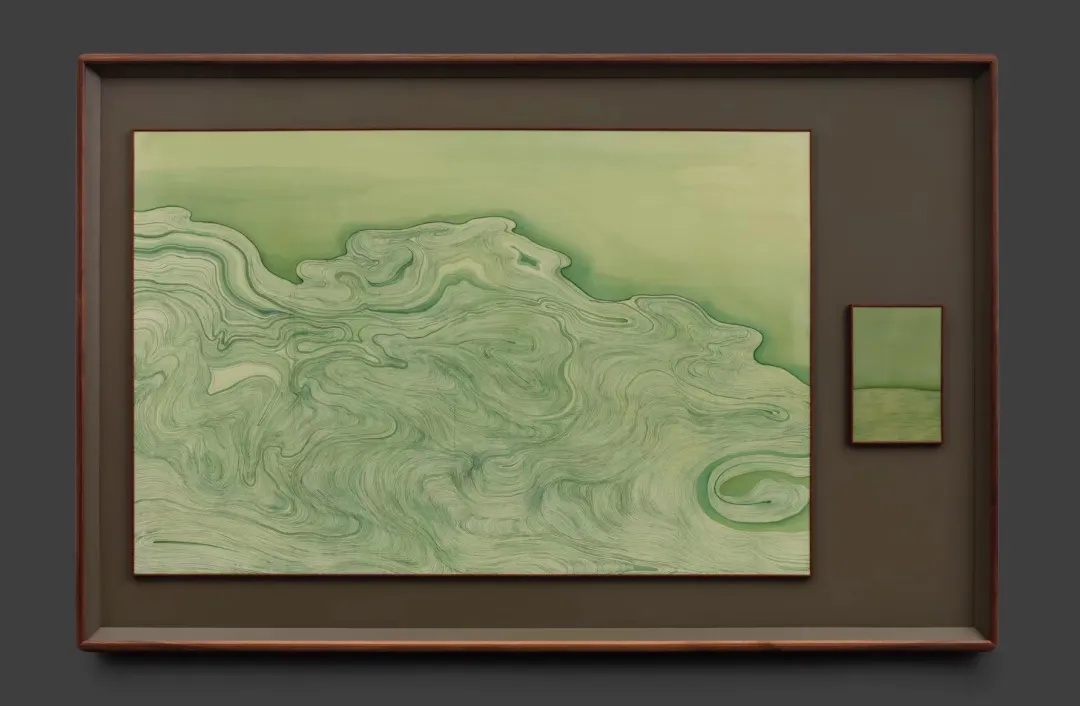 ▲ Contemplate - 70 & 71 , Mineral color pigment on silk, 200 x 120 cm, 2018
▲ Contemplate - 70 & 71 , Mineral color pigment on silk, 200 x 120 cm, 2018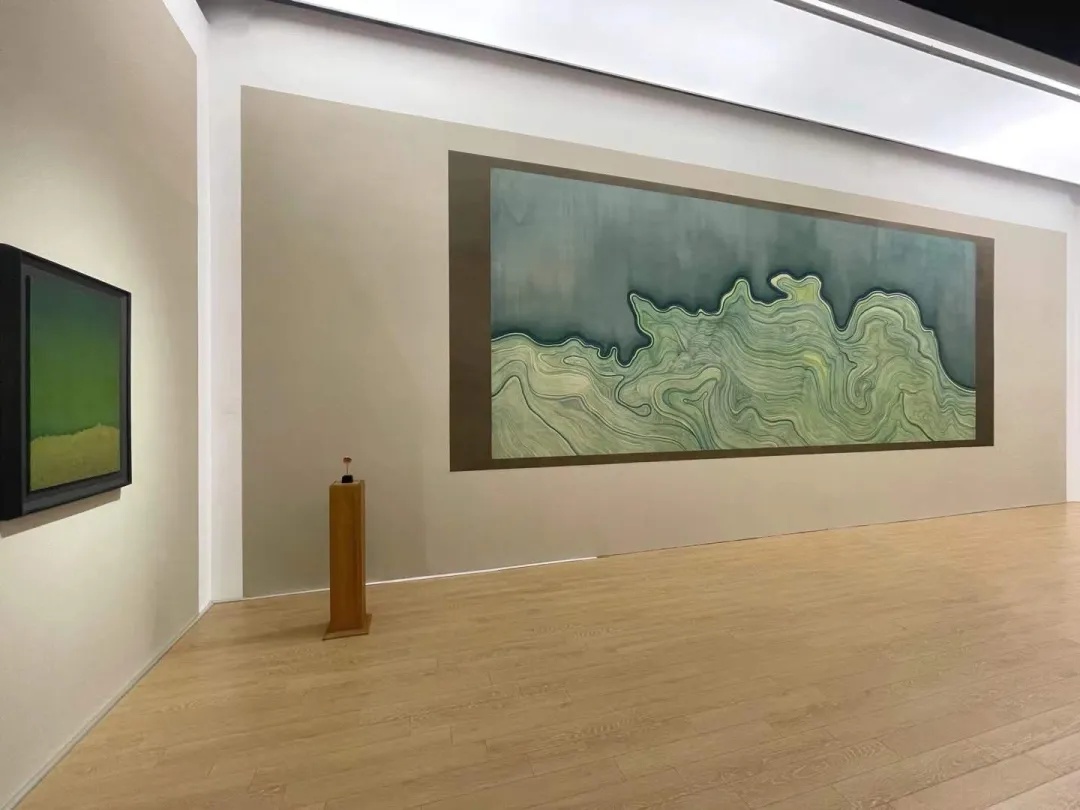 |
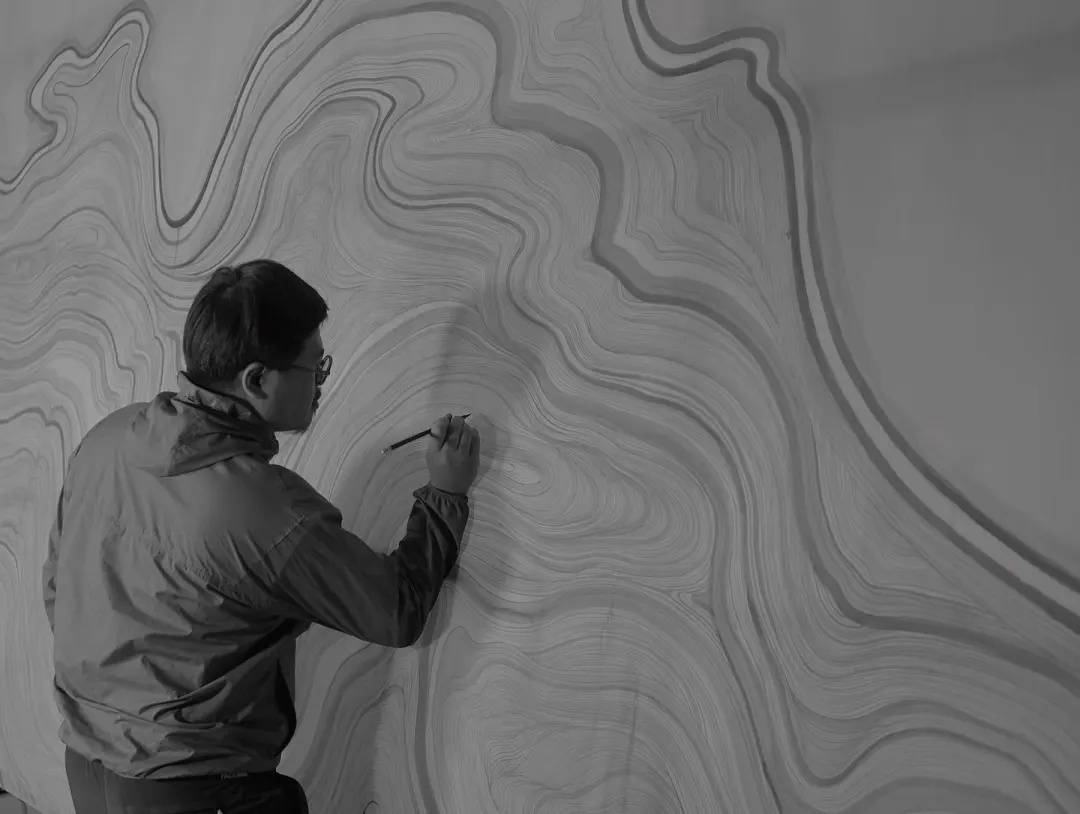 |
© Courtesy of the artist


